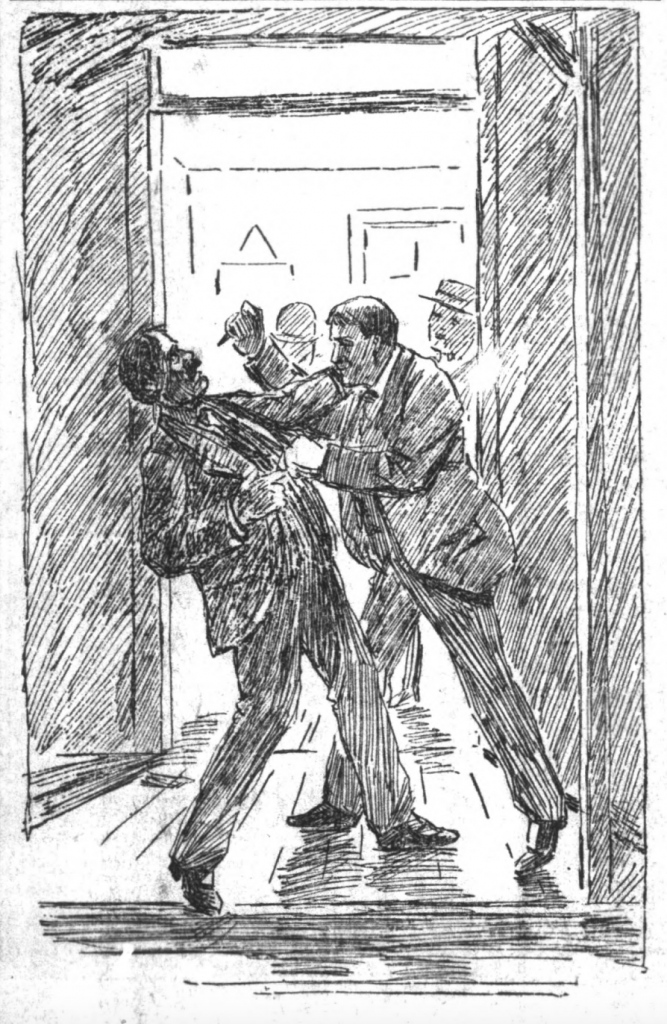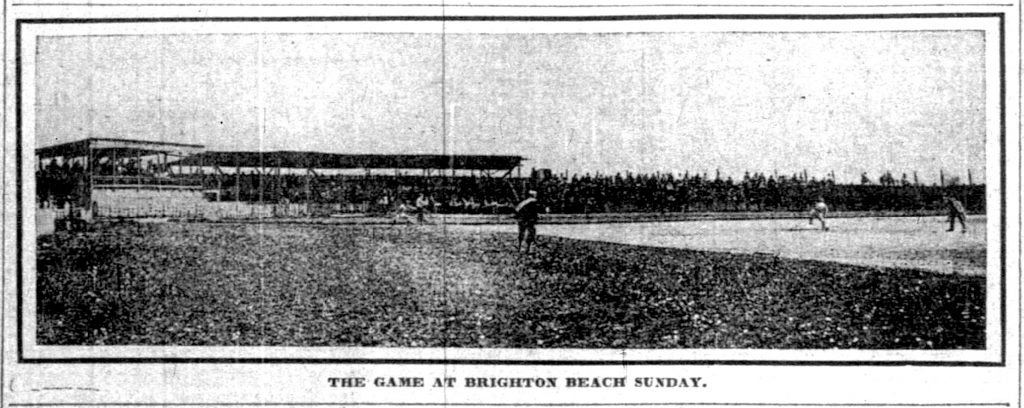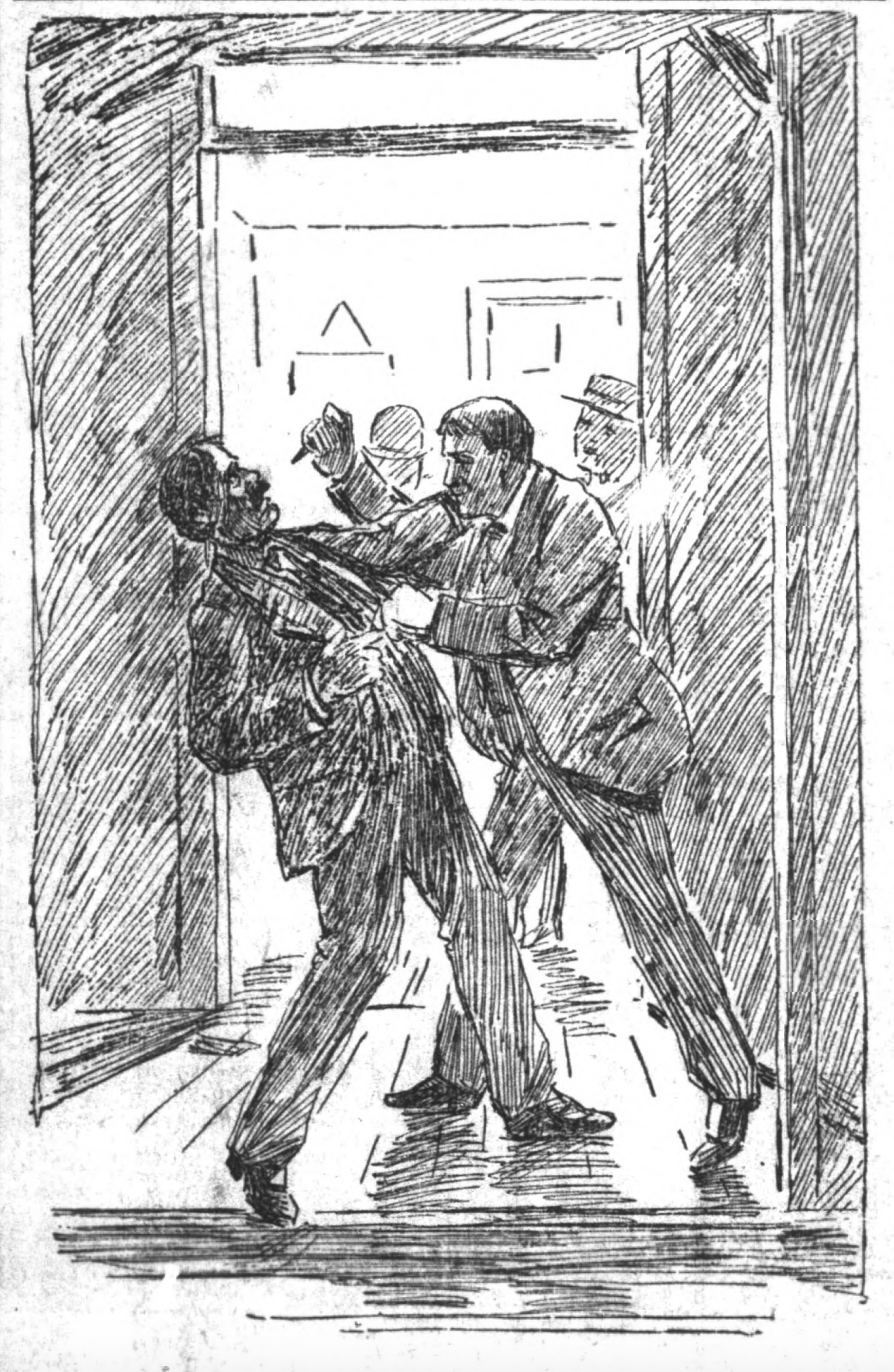Brighton Beach was the site of a series of “roadhouses” and other saloon-like establishments where drinking and gambling were the main attractions. It was located along the western bank of the north of present-day 16th Street (previously 7th Street) and just south of the canal aqueduct over . The Beach was accessible via what would be known as Brighton Boulevard, an unimproved road that ran north along the canal from 16th Street, just west of the present-day intersection of 16th Street and Martin Luther King Jr. Avenue.

The Beach, with its saloons and roadhouses, had an infamous reputation. Reports of crime were frequent. Robberies, assaults, stabbings, and even murders were reported throughout the Beach’s history. Sex workers also frequented the various establishments and roadhouses along the Beach. One such establishment was called the Brighton Beach Roadhouse, located at 1806 Brighton Boulevard. Around 1910, Charlie Day, a local saloon owner and businessman who previously operated the Brighton Beach Roadhouse, opened the Bungalow, a roadhouse located at 1925 Brighton Boulevard.
Not all activities in the area were criminal. Local businesses used the site to field baseball games between semi-professional and amateur teams playing in the local commercial leagues. Local African American teams such as the , Unions, Abrams Giants, and others also used the Brighton Beach field. reported on numerous games played at the Beach, including a game in 1904 where the ABCs defeated the BTR Professionals (a white team) at the Brighton Beach stadium before the largest crowd to ever see a game on that field.

The winter season did not slow activities at the Beach. When the canal froze over it became a popular ice-skating venue, with the roadhouses on stand-by to provide refreshments. In December of 1895, the reported that in between skating sessions, gambling was available on the banks of the canal, as were vendors selling hot dogs.
The Brighton Beach area became the property of the in the early 1900s and the company’s White River Station was built on the land to treat water from the nearby canal for use as the city’s water supply. The roadhouses continued to operate into the 1920s and 1930s. In 1939 the water company reportedly demolished the last roadhouse left on the property.
FURTHER READING
- The author adapted this EOI entry from their original article:
- Fujawa, Ed. “Gambling, Baseball, Beer and Fast Times: The History of Brighton Beach in Indianapolis.” Class 900: Indianapolis, April 19, 2023. https://www.class900indy.com/post/gambling-baseball-beer-and-fast-times-the-history-of-brighton-beach-in-indianapolis.
CITE THIS ENTRY
APA:
Fujawa, E. (2024). Brighton Beach. Encyclopedia of Indianapolis. Retrieved Jan 5, 2026, from https://indyencyclopedia.org/brighton-beach/.
MLA:
Fujawa, Ed. “Brighton Beach.” Encyclopedia of Indianapolis, 2024, https://indyencyclopedia.org/brighton-beach/. Accessed 5 Jan 2026.
Chicago:
Fujawa, Ed. “Brighton Beach.” Encyclopedia of Indianapolis, 2024. Accessed Jan 5, 2026. https://indyencyclopedia.org/brighton-beach/.

Help improve this entry
Contribute information, offer corrections, suggest images.
You can also recommend new entries related to this topic.
